面试经典算法24 - 二叉树求根节点到叶子结点数字之和
LeetCode.129
公众号:阿Q技术站
问题描述
给你一个二叉树的根节点 root ,树中每个节点都存放有一个 0 到 9 之间的数字。
每条从根节点到叶节点的路径都代表一个数字:
例如,从根节点到叶节点的路径 1 -> 2 -> 3 表示数字 123 。
计算从根节点到叶节点生成的 所有数字之和 。
叶节点 是指没有子节点的节点。
示例 1:
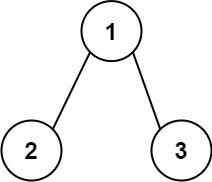
输入:root = [1,2,3]
输出:25
解释:
从根到叶子节点路径 1->2 代表数字 12
从根到叶子节点路径 1->3 代表数字 13
因此,数字总和 = 12 + 13 = 25
示例 2:
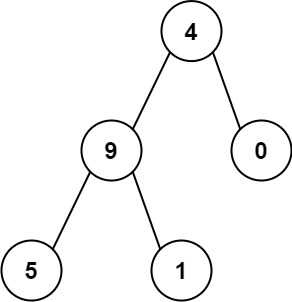
输入:root = [4,9,0,5,1]
输出:1026
解释:
从根到叶子节点路径 4->9->5 代表数字 495
从根到叶子节点路径 4->9->1 代表数字 491
从根到叶子节点路径 4->0 代表数字 40
因此,数字总和 = 495 + 491 + 40 = 1026
提示:
- 树中节点的数目在范围
[1, 1000]内 0 <= Node.val <= 9- 树的深度不超过
10
思路
递归
- 使用深度优先搜索(DFS)遍历二叉树,遍历过程中记录从根节点到当前节点的路径数字;
- 当遍历到叶节点时,将当前路径数字加到总和中;
- 遍历完成后,返回总和即可。
非递归
- 使用两个栈
nodeStack和numStack分别存储节点和对应的路径数字。 - 将根节点入栈
nodeStack和numStack。 - 循环执行以下步骤直到 nodeStack 为空:
- 弹出栈顶节点
node和对应的路径数字num。 - 如果
node是叶节点,则将num加到总和中。 - 如果
node不是叶节点,则将node的子节点和对应的路径数字入栈。
- 弹出栈顶节点
- 返回总和。
图解
- 申请两个栈nodeStack和numStack分别存放节点和对应的路径数字(这里为了看起来直观,就将节点也将节点数字表示)。将根节点入栈。
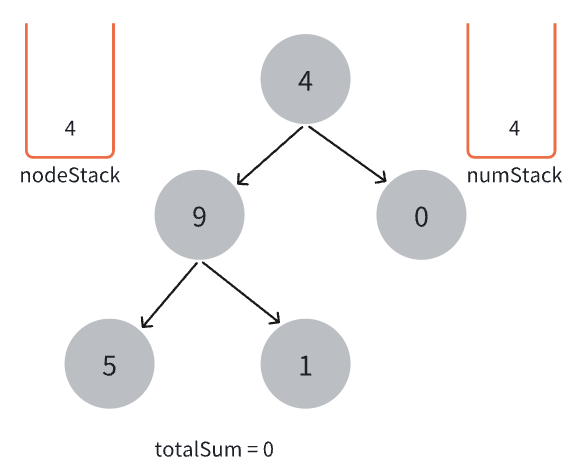
- 如果存储节点的栈不为空,就将栈顶节点和栈顶路径数字弹出。

- 先将右子节点入栈,再将左子结点入栈。并将对应的值入栈。
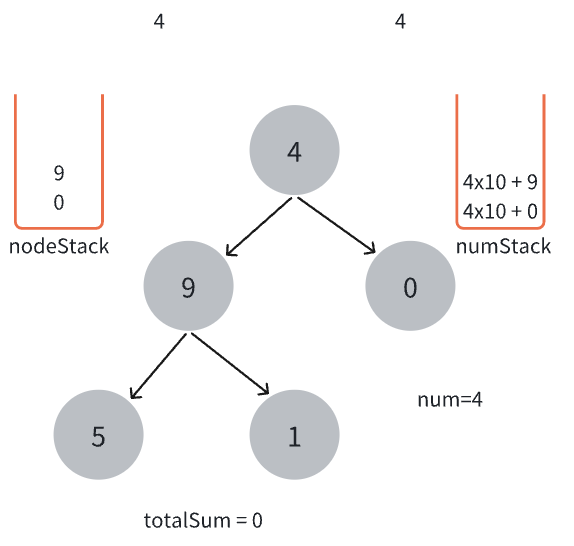
-
将栈顶元素弹出。
- 先将左子节点弹出
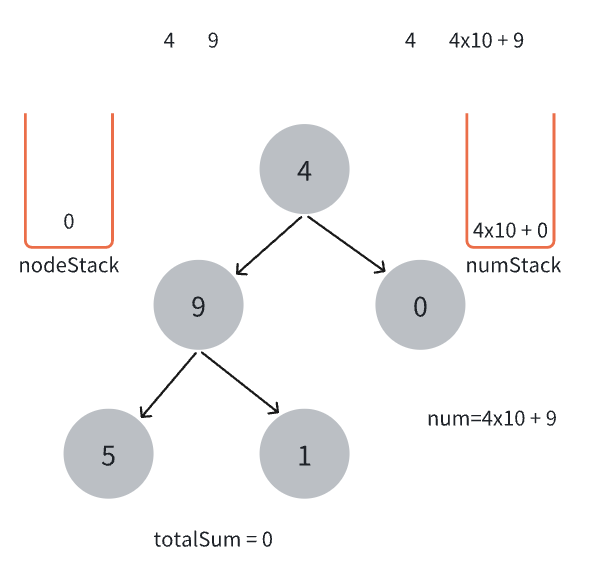
- 再将右子节点弹出
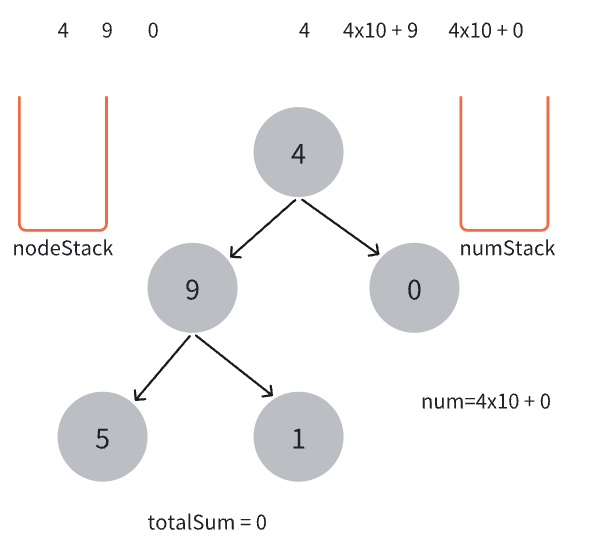
-
左子结点非叶子结点,就继续将其右左节点依次入栈。右子节点是叶子结点。所以就将路径数字加到总和中。
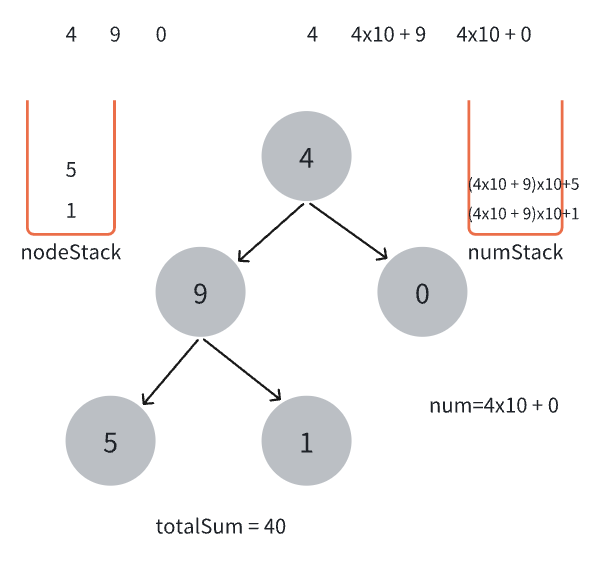
- 重复5、6步。但是这两个节点都是叶子结点,所以就将其加到总和中。
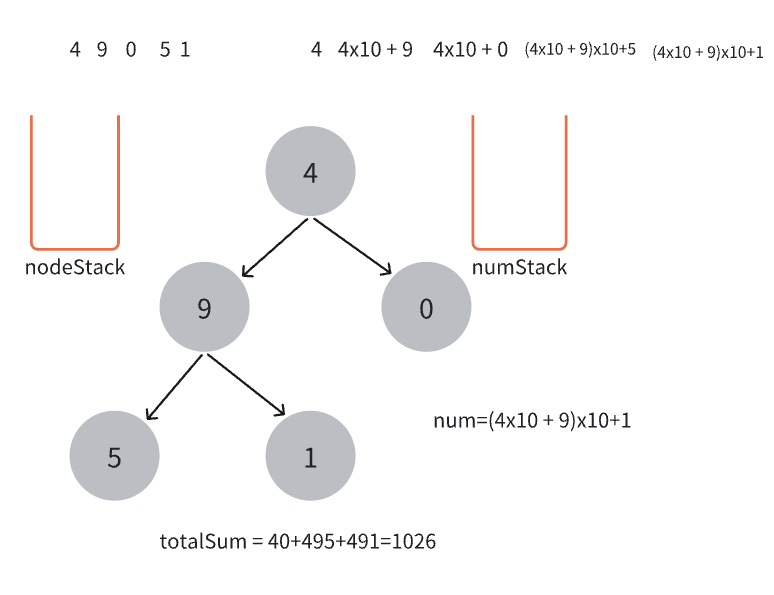
参考代码
C++
递归
#include <iostream>
#include <vector>
using namespace std;
// 二叉树节点的定义
struct TreeNode {
int val;
TreeNode* left;
TreeNode* right;
TreeNode(int x) : val(x), left(nullptr), right(nullptr) {}
};
int sumNumbers(TreeNode* root) {
if (!root) return 0; // 如果根节点为空,直接返回0
int totalSum = 0; // 总和
vector<int> path; // 当前路径
// 深度优先搜索函数
function<void(TreeNode*)> dfs = [&](TreeNode* node) {
if (!node) return; // 如果节点为空,直接返回
path.push_back(node->val); // 将当前节点值加入路径
if (!node->left && !node->right) { // 如果是叶节点
int pathNum = 0;
for (int num : path) {
pathNum = pathNum * 10 + num; // 计算路径数字
}
totalSum += pathNum; // 将路径数字加到总和中
} else {
dfs(node->left); // 递归处理左子节点
dfs(node->right); // 递归处理右子节点
}
path.pop_back(); // 回溯,移除当前节点值
};
dfs(root); // 从根节点开始深度优先搜索
return totalSum; // 返回总和
}
// 创建二叉树
TreeNode* createTree(vector<int>& nodes, int index) {
if (index >= nodes.size() || nodes[index] == -1) {
return nullptr; // 如果节点为空,则返回nullptr
}
TreeNode* root = new TreeNode(nodes[index]); // 创建当前节点
root->left = createTree(nodes, 2 * index + 1); // 创建左子树
root->right = createTree(nodes, 2 * index + 2); // 创建右子树
return root; // 返回当前节点
}
// 销毁二叉树
void destroyTree(TreeNode* root) {
if (!root) return; // 如果根节点为空,直接返回
destroyTree(root->left); // 递归销毁左子树
destroyTree(root->right); // 递归销毁右子树
delete root; // 删除当前节点
}
int main() {
vector<int> nodes = {1, 2, 3}; // 二叉树的先序遍历序列
TreeNode* root = createTree(nodes, 0); // 创建二叉树
int result = sumNumbers(root); // 计算所有路径数字之和
cout << result << endl; // 输出结果
destroyTree(root); // 销毁二叉树
return 0;
}
非递归
#include <iostream>
#include <vector>
#include <stack>
using namespace std;
// 二叉树节点的定义
struct TreeNode {
int val;
TreeNode* left;
TreeNode* right;
TreeNode(int x) : val(x), left(nullptr), right(nullptr) {}
};
int sumNumbers(TreeNode* root) {
if (!root) return 0; // 如果根节点为空,直接返回0
int totalSum = 0; // 总和
stack<TreeNode*> nodeStack; // 存储节点的栈
stack<int> numStack; // 存储路径数字的栈
nodeStack.push(root); // 将根节点入栈
numStack.push(root->val); // 将根节点的值加入路径数字栈
while (!nodeStack.empty()) {
TreeNode* node = nodeStack.top(); // 获取栈顶节点
nodeStack.pop(); // 弹出栈顶节点
int num = numStack.top(); // 获取栈顶路径数字
numStack.pop(); // 弹出栈顶路径数字
if (!node->left && !node->right) { // 如果是叶节点
totalSum += num; // 将路径数字加到总和中
} else {
if (node->right) { // 如果有右子节点,入栈右子节点和对应的路径数字
nodeStack.push(node->right);
numStack.push(num * 10 + node->right->val);
}
if (node->left) { // 如果有左子节点,入栈左子节点和对应的路径数字
nodeStack.push(node->left);
numStack.push(num * 10 + node->left->val);
}
}
}
return totalSum; // 返回总和
}
// 创建二叉树
TreeNode* createTree(vector<int>& nodes, int index) {
if (index >= nodes.size() || nodes[index] == -1) {
return nullptr; // 如果节点为空,则返回nullptr
}
TreeNode* root = new TreeNode(nodes[index]); // 创建当前节点
root->left = createTree(nodes, 2 * index + 1); // 创建左子树
root->right = createTree(nodes, 2 * index + 2); // 创建右子树
return root; // 返回当前节点
}
// 销毁二叉树
void destroyTree(TreeNode* root) {
if (!root) return; // 如果根节点为空,直接返回
destroyTree(root->left); // 递归销毁左子树
destroyTree(root->right); // 递归销毁右子树
delete root; // 删除当前节点
}
int main() {
vector<int> nodes = {1, 2, 3}; // 二叉树的先序遍历序列
TreeNode* root = createTree(nodes, 0); // 创建二叉树
int result = sumNumbers(root); // 计算所有路径数字之和
cout << result << endl; // 输出结果
destroyTree(root); // 销毁二叉树
return 0;
}
Java
import java.util.*;
// 定义二叉树节点
class TreeNode {
int val;
TreeNode left;
TreeNode right;
TreeNode(int x) { val = x; }
}
public class Solution {
public int sumNumbers(TreeNode root) {
if (root == null) return 0;
int totalSum = 0;
Stack<TreeNode> nodeStack = new Stack<>(); // 用于存储节点的栈
Stack<Integer> numStack = new Stack<>(); // 用于存储路径数字的栈
nodeStack.push(root);
numStack.push(root.val);
while (!nodeStack.isEmpty()) {
TreeNode node = nodeStack.pop();
int num = numStack.pop();
if (node.left == null && node.right == null) {
totalSum += num; // 如果是叶节点,将路径数字加到总和中
} else {
if (node.right != null) {
nodeStack.push(node.right);
numStack.push(num * 10 + node.right.val); // 将右子节点和路径数字入栈
}
if (node.left != null) {
nodeStack.push(node.left);
numStack.push(num * 10 + node.left.val); // 将左子节点和路径数字入栈
}
}
}
return totalSum; // 返回总和
}
// 创建二叉树
public TreeNode createTree(Integer[] nodes, int index) {
if (index >= nodes.length || nodes[index] == null) {
return null;
}
TreeNode root = new TreeNode(nodes[index]);
root.left = createTree(nodes, 2 * index + 1);
root.right = createTree(nodes, 2 * index + 2);
return root;
}
// 测试
public static void main(String[] args) {
Solution solution = new Solution();
Integer[] nodes = {1, 2, 3};
TreeNode root = solution.createTree(nodes, 0);
int result = solution.sumNumbers(root);
System.out.println(result);
}
}
Python
class TreeNode:
def __init__(self, val=0, left=None, right=None):
self.val = val
self.left = left
self.right = right
def sumNumbers(root):
if not root:
return 0
total_sum = 0
node_stack = [root] # 用于存储节点的栈
num_stack = [root.val] # 用于存储路径数字的栈
while node_stack:
node = node_stack.pop()
num = num_stack.pop()
if not node.left and not node.right:
total_sum += num # 如果是叶节点,将路径数字加到总和中
else:
if node.right:
node_stack.append(node.right)
num_stack.append(num * 10 + node.right.val) # 将右子节点和路径数字入栈
if node.left:
node_stack.append(node.left)
num_stack.append(num * 10 + node.left.val) # 将左子节点和路径数字入栈
return total_sum # 返回总和
# 创建二叉树
def create_tree(nodes, index):
if index >= len(nodes) or nodes[index] is None:
return None
root = TreeNode(nodes[index])
root.left = create_tree(nodes, 2 * index + 1)
root.right = create_tree(nodes, 2 * index + 2)
return root
# 测试
nodes = [1, 2, 3]
root = create_tree(nodes, 0)
result = sumNumbers(root)
print(result)






















 758
758

 被折叠的 条评论
为什么被折叠?
被折叠的 条评论
为什么被折叠?








